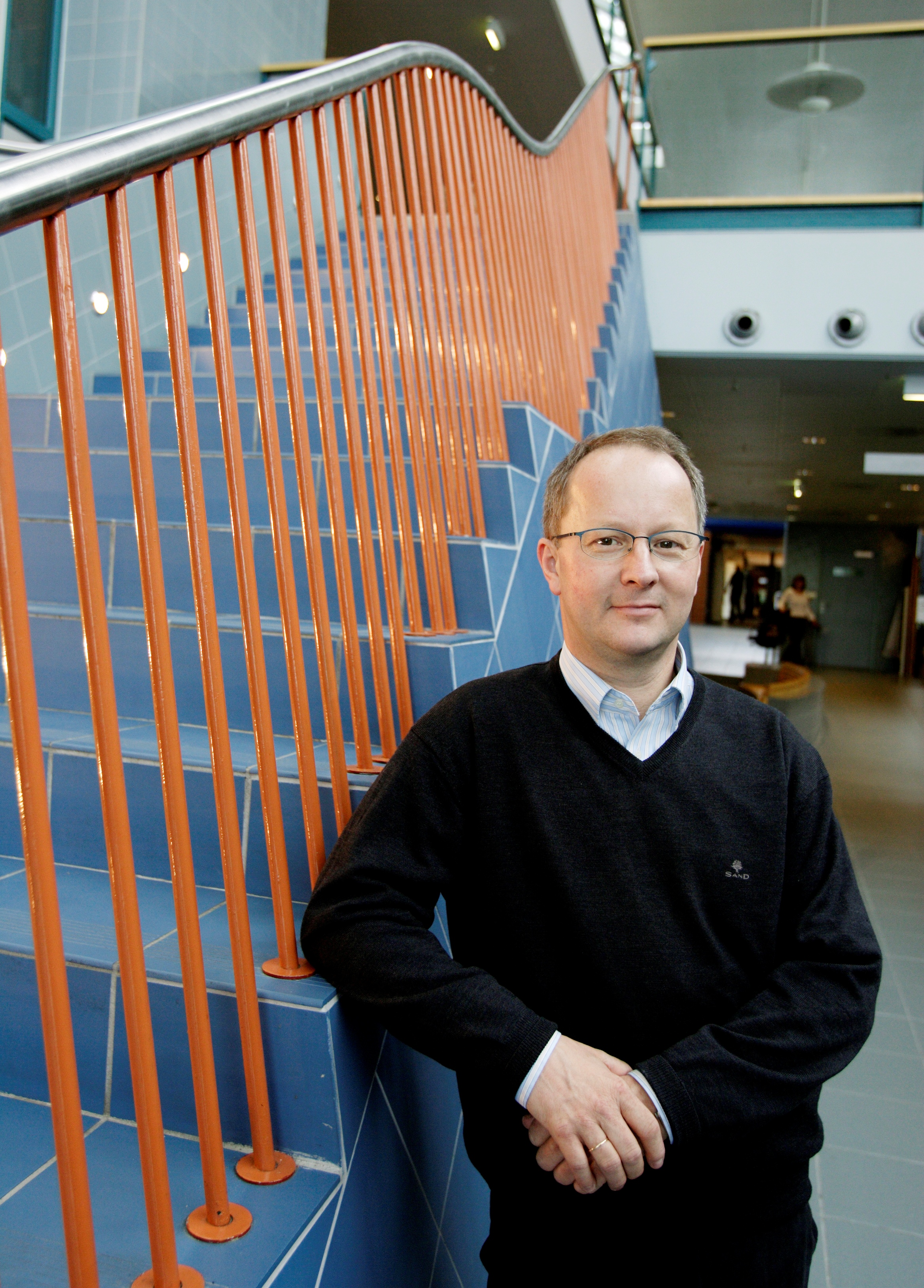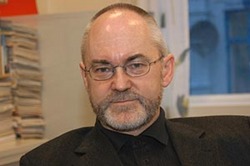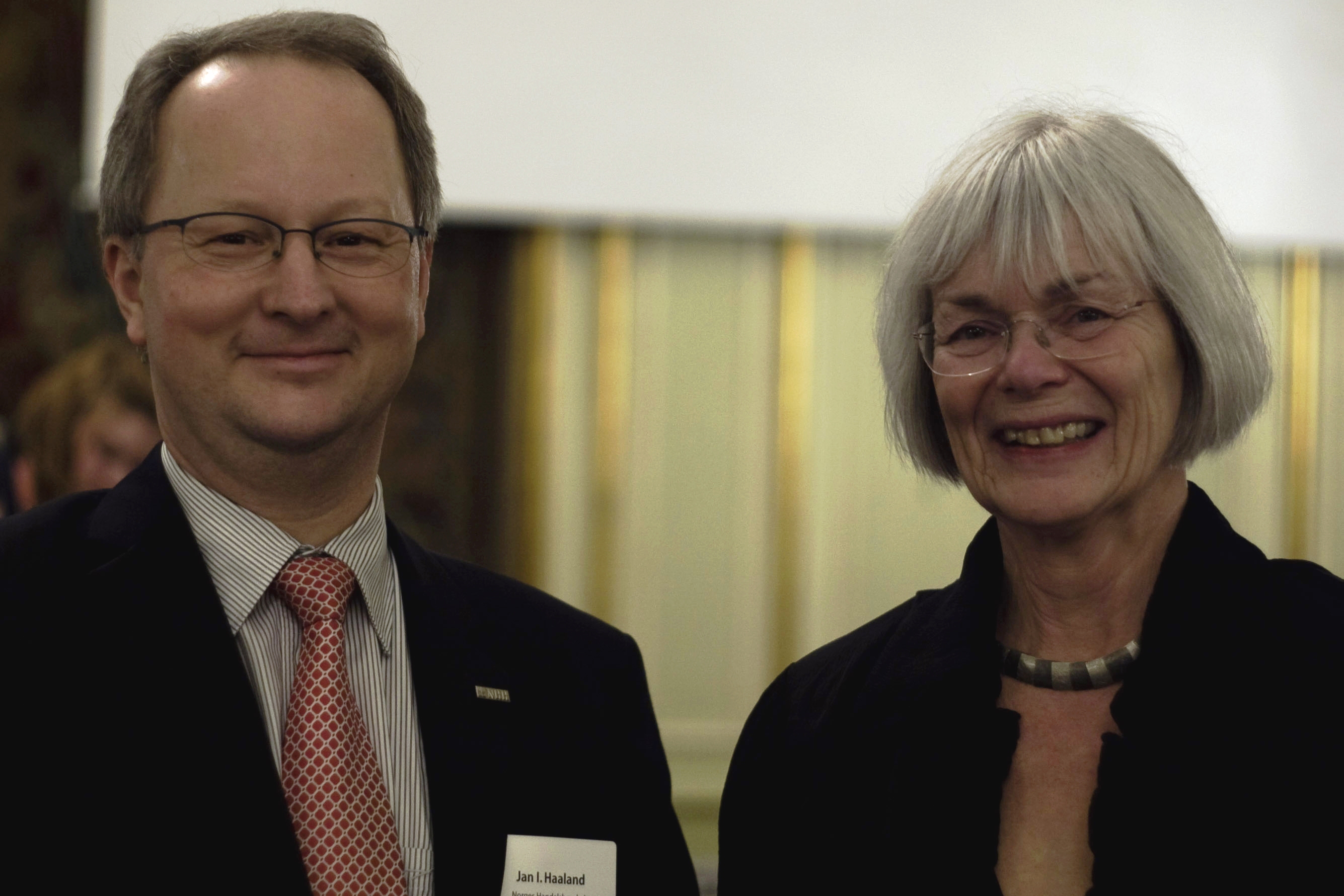Award strengthens commitment
Receiving the Gender Equality Award from the Ministry of Education and Research has generated enthusiasm, more room for action and increased focus on gender equality efforts, according to last year’s two prize winners. This year’s call for nominations is now underway.

“The Gender Equality Award has been a great inspiration for us at the university. It has helped to create enthusiasm and to draw more attention to gender equality efforts. Winning the award has been especially inspiring for those who work with these issues on the gender equality committee and the like,” says Sigmund Grønmo, Rector of the University of Bergen (UiB).
In January of this year, UiB received the Gender Equality Award from the Ministry of Education and Research together with the Norwegian School of Economics and Business Administration (NHH) in Bergen. Each of the institutions received one million kroner. The two were selected because they have developed sound action plans and their gender equality efforts are firmly anchored in their top-level administrations.
Rector Jan I. Haaland of NHH believes that the Gender Equality Award has enhanced their work:
“It has given us more opportunities and greater room for action with regard to implementing the goals we have set for ourselves.”
Additional measures
Both rectors emphasize that, most importantly, the award provides support to the action plans and long-term gender equality efforts. Grønmo adds that at UiB they have decided to use some of the prize money to finance additional measures.
“One of the measures is that we will appoint more women to professor II positions, especially at the Faculty of Mathematics and Natural Sciences. Among other things, we will bring in professors from abroad,” says Grønmo.
“Another measure relates to our work to strengthen opportunities for women to qualify for academic positions. We have therefore started what we call a ‘women’s faculty lunch club’, in which women in academic positions form a network across disciplines. Through this network they can share experiences about opportunities to gain additional qualifications and other topics.”
Leadership training is a third measure made possible by the prize money. Grønmo explains that the percentage of women in leadership positions at the departmental level is low and that this measure focuses in particular on the areas of medicine, dentistry and psychology.
“We will also conduct a survey of the working environment with a focus on gender issues at the Faculty of Social Sciences, and some of the prize money will go to writing grants for women researchers so they can be exempted from teaching duties,” he explains.
Anchored in the academic communities
Grønmo emphasizes that these measures are based on the faculties’ own priorities so the faculties also allocate funding to the measures.

Haaland at NHH also believes it is crucial that gender equality efforts are anchored in the academic communities.
“It is important to emphasize that the academic communities took part in a long, thorough process to draw up the action plan. This means that the action plan is firmly anchored in the communities and that those who will help to implement the action plan feel a sense of ownership.”
Haaland says that the prize money will go mainly to long-term, systematic efforts to promote gender equality at the institution, based on the action plan.
Recruitment and qualifying measures
“We focus primarily on two things in our gender equality efforts: recruiting more women researchers and qualifying female employees for professor-level positions,” says Haaland.
He explains that the top-level administration gives the academic departments incentives to recruit women researchers by providing a one-off funding allocation or by covering salary costs.
“When new employees are hired, we try to ensure that the female employees become well established with their research by providing them with funding for operational costs and the like.”
“The qualifying measures are targeted toward women post-doctoral researchers and associate professors. They can more quickly earn the right to take research sabbaticals and receive extra funding for activities such as participation in international conferences. We are also getting ready to introduce a mentor scheme, which may involve both national and international mentors. We hope this scheme will also help women qualify for upper-level positions,” says Haaland.
He notes that the percentage of women professors increased last year from 7.5 to 11 per cent. The increase is a result of both new appointments and promotions resulting from increased qualifications. Haaland adds that they are also working to recruit more women to their study programmes in order to increase the recruitment base for research.
Recruitment and qualifying measures are also an important focus at UiB.
“Our most important task now is to improve the gender balance among professors. In the past four years the percentage of women professors has increased from 16 to 20 per cent. We are pleased with this trend, but even though it’s headed in the right direction, the percentage of women is still far too low. To improve this, we have to focus on two things: qualifying measures and more post-doctoral research positions,” says Grønmo.

Drawing on talent
So why is gender equality so important for these two institutions?
Grønmo believes there are three good reasons to work towards gender balance:
“First of all, it is the right thing to do from a perspective of fairness – women have the right to the same opportunities as men. Second, it is also crucial for reasons of quality. If we assume that talent is divided equally between everyone, we lose out on a great deal of talent and resources if we only employ men. Finally, I want to stress that gender balance is important from a perspective of diversity, that we hire people with different backgrounds and perspectives,” says Grønmo.
Haaland also focuses on talent and quality when he explains the reasoning behind the institution’s gender equality efforts.
“We want to draw on all available talent, and gender balance in recruitment can enhance the quality of our work. Also, more women on our academic staff will be important as role models for the candidates in our study programmes,” he believes.
Translated by Connie Stultz
The Ministry of Education and Research plans to continue its work to promote better gender balance in the higher education and research institute sectors. Minister Aasland has therefore launched the Gender Equality Award for 2009, and the ministry has allocated NOK 2 million in prize money for 2009, which will supplement the resources that the institutions themselves have set aside for their gender equality efforts.
As in previous years, the Committee for Mainstreaming – Women in Research will be responsible for announcing the award, evaluating the nominees and making a recommendation to the ministry.
The application deadline for the Gender Equality Award for 2009 is Friday 13 November 2009.
The Ministry of Research and Education presented the Gender Equality Award for 2008 to the University of Bergen and the Norwegian School of Economics and Business Administration.
